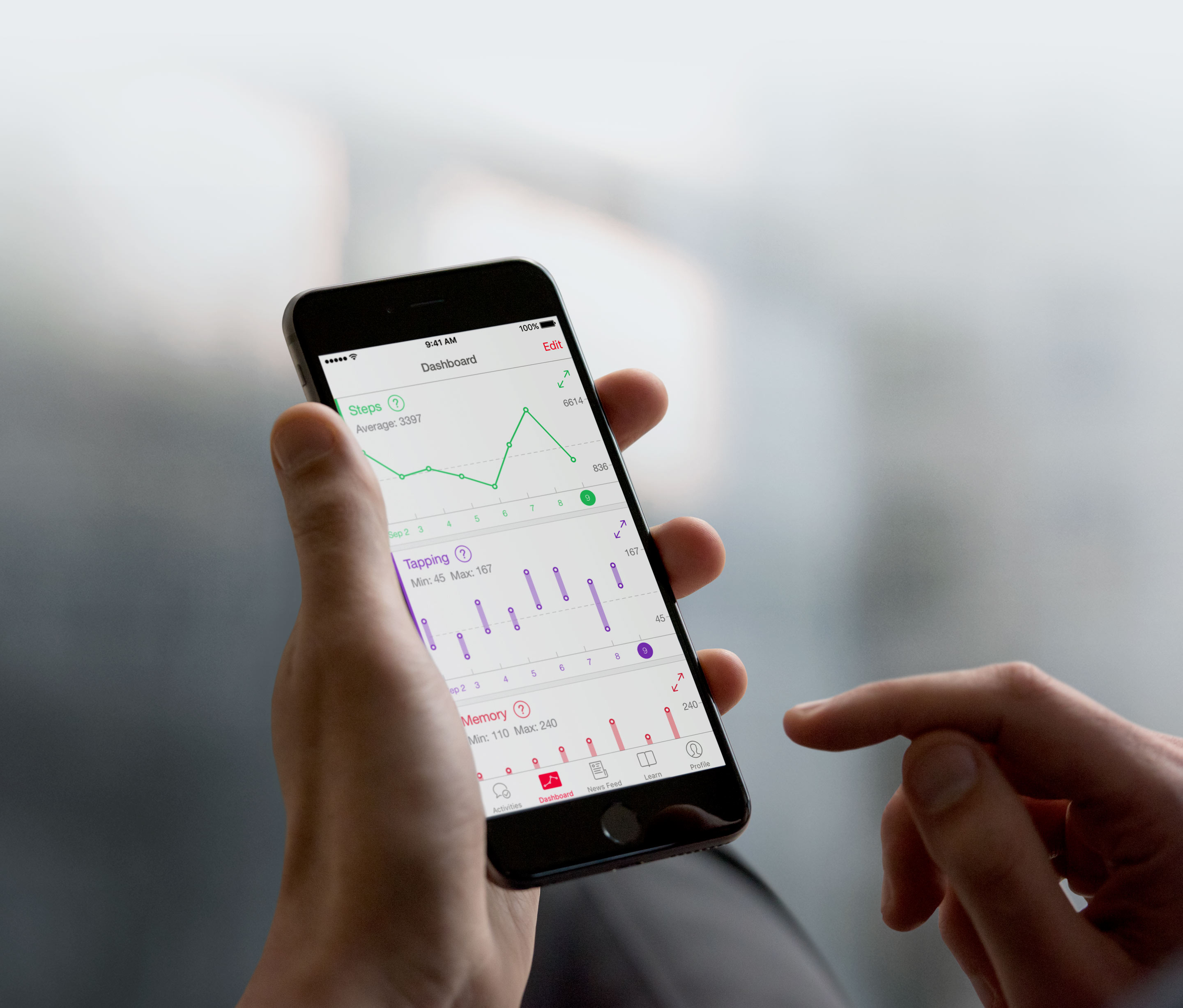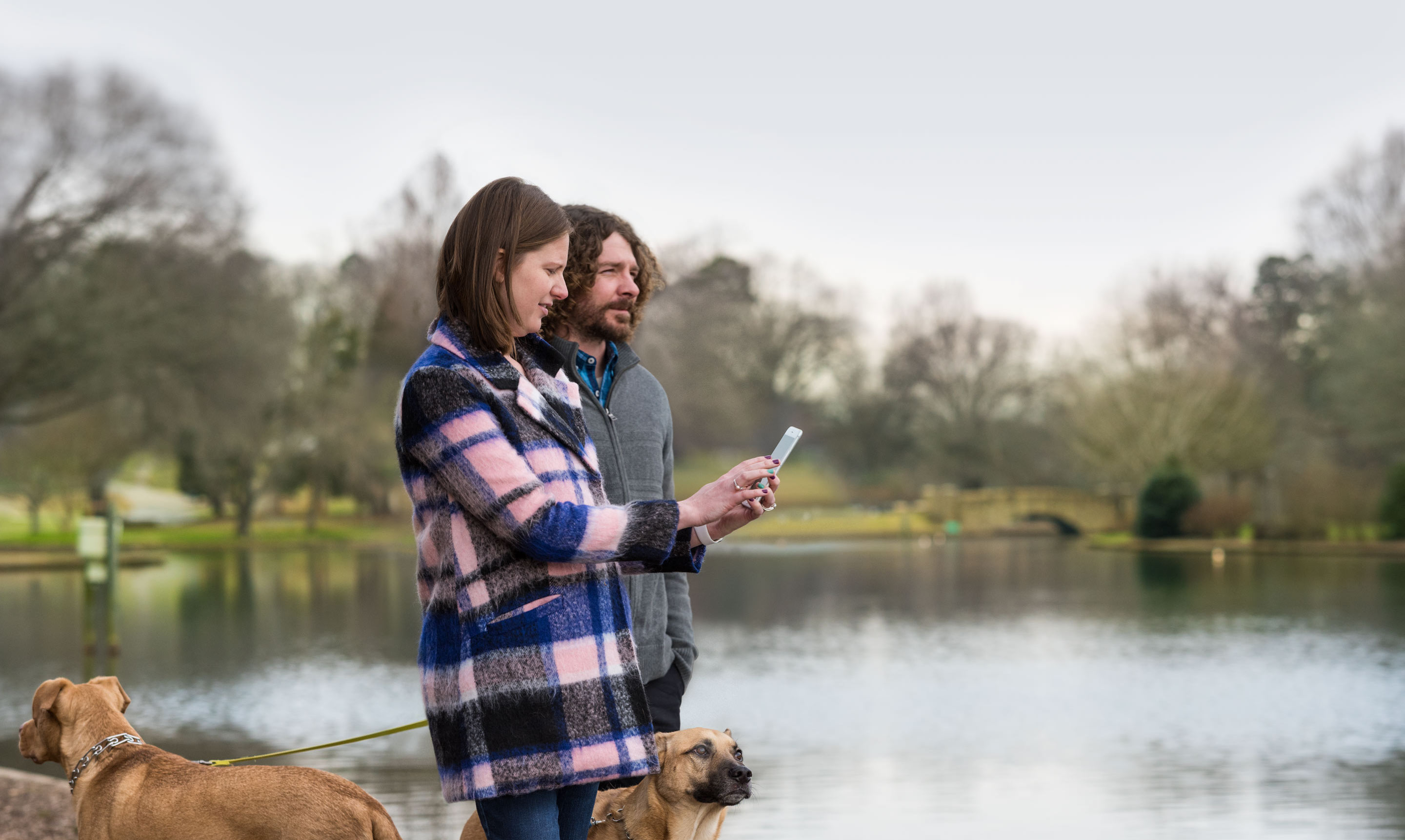
- 2 Min Read / Blog / 3.2.2020

As part of Apple’s ever-expanding forays into the health and wellness space, this February it introduced CareKit, a new open-source framework designed to improve the patient experience. On the heels of HealthKit, the SDK that allows iOS apps to share health and fitness data, and ResearchKit, an open-source framework for sharing large-audience medical research data with scientists and medical professionals, CareKit is Apple’s newest and most compelling health-related technology that is aimed squarely at connecting patients with the care and caregivers they need.
While HealthKit makes consumer apps like Fitbit or Lifesum more powerful, allowing them to share data about users’ daily physical activity or caloric intake, the framework is specifically designed for consumers to make personal health choices and see personal trends in across lightweight wellness metrics. Conversely, ResearchKit offers very little end-user value, and instead operates as a reporting platform for medical researchers to learn about medical conditions in aggregate. Each framework is useful, but they don’t go far enough to serve the healthcare space—neither specifically addresses users’ ongoing relationships with their medical conditions that require treatment.
CareKit is different in that it is designed as a meeting place between patients, their condition, their treatment, and their caregivers. It features a wide range of technologies that are designed to augment patients’ ongoing treatment plan and support their relationships with doctors and hospital systems. While HealthKit is a great way for step trackers to share data and ResearchKit is a great way for medical institutions to learn about Parkinson’s Disease, CareKit is the first technology from Apple that will improve the patient experience and measurably improve the daily lives of millions of people.
CareKit is a software development kit that iOS developers can integrate into their applications to track medical care. Today, it isn’t much. Tomorrow, it will serve as the backbone of leading medical applications and become an instrumental part of how users treat a myriad of medical conditions through technology. CareKit isn’t one experience—it’s a suite of technologies that are designed to fill in gaps between every part of medical care. Today, the SDK is made up of four modules that facilitate four unique user experiences.
The first experience with CareKit is the Care Card, a screen that helps users keep track of their treatments and complete activities necessary to catalog their condition. The Care Card can be configured to show a schedule of medications, serve reminders for physical exercise, and even dynamically serve appropriate dosages. The Care Card is the daily check-in point for patients experiencing ongoing or chronic medical conditions, and is designed to become part of users’ everyday lives with their iPhone. Over time, it catalogs the treatments users take and saves that data for later analysis.
CareKit takes advantage of the hardware capabilities of iPhone and Apple Watch—including the accelerometer and gyroscope—to collect data about users’ activities and map those activities against medical conditions. In addition, CareKit apps can also collect data from HealthKit—like temperature, heart rate, or blood pressure as reported by connected medical devices—or include surveys to assess users’ symptoms. Out of the box, the CareKit framework doesn’t address any one medical condition or track any specific symptoms. Instead, it introduces a common vocabulary between the data that Apple technologies can collect and the reference data sets that can help illustrate progress.
And when it comes to illustrating progress, the Insight Dashboard is Apple’s answer. This is where CareKit becomes powerful—the Insight Dashboard combines data from the Care Card and the Symptom and Measurement Tracker to tell the story of whether treatments are working. When a user takes their medication in the morning, and then reports their symptoms through HealthKit and the Symptom Tracker hours later, Insight Dashboard maps those events on a timeline to help users understand whether their treatment plan is having a measurable impact on their symptoms.
Finally, CareKit includes Connect, a module that facilitates two-way communication between patients and their caregivers. All of the data that CareKit is collecting—about users’ treatments, their symptoms, and the chronological relationships between the two—can be shared with their doctor, who will have greater insight into what’s happening. If a users’ treatment isn’t improving their symptoms, doctors can adjust dosages or daily regimens on the fly, and those changes are reflected in patients’ Care Cards. This is a transformative change in how the healthcare industry operates, and allows doctors to participate in the treatment experience for patients long after the diagnosis and between regular check-ups.

While the most obvious use case for CareKit is among medical apps provided by caregivers and hospitals, this isn’t the only application of the technology. Because CareKit is open-source, there’s no limit to what developers can do given Apple’s starting point. The technologies that collect user health and symptom data and map those against treatments are powerful tools, and aren’t limited to traditional health conditions like diabetes. The CareKit framework can augment any iOS application that participates in users’ daily activity and wellness story, and can power exciting new features to help users understand how their wellness choices impact their actual wellness.
One of the biggest trends in the mobile industry are lightweight fitness apps that count steps, track caloric burn, and help users stay in shape. With CareKit, these apps have new tools to show the impact of these daily fitness decisions. Imagine apps that map daily workouts with users’ mood or health metrics later in the day, demonstrating the positive impact that exercise can have on attitude and other physical conditions. Or a step tracker and meal planner that helps users see the effect that walking to work has on their appetite at lunch. These ideas are extensions of what HealthKit apps attempt to accomplish today, but CareKit offers new open-source tools that make comparative health data much easier to implement on iOS.
HealthKit has comprehensive dietary tracking with support for nearly every nutrient and component of the food we eat. CareKit can leverage this immense data set and map it against other health metrics, like users’ physical activity, weight, blood pressure, and other metrics that HealthKit apps and devices can track. Apps that track calories or points now have the means to update users’ daily recommended intake algorithmically, prescribing new dietary regimens through the Care Card module and allowing users to make smarter choices based on the data the system collects. Having an understanding of how diet and exercise are interrelated and being able to tell stories about the long-tail effect of dietary choices throughout users’ days can have a massive impact on how users work toward their health and weight loss goals.
CareKit is a powerful tool for delivering care through mobile apps, and the story doesn’t end with treating diseases—it extends to preventative care as well. That’s because the kinds of metrics that CareKit apps track don’t have to be limited to the ones prescribed by HealthKit. Mental wellness is as much a part of users’ healthcare picture as the food they eat or the steps they take, and CareKit apps can be configured to help users catalog and improve how they take care of themselves. Apps to help with guided meditation can show the emotional and physical impact that habit has upon users everyday, mapping times of mindfulness with improved moods as reported by in-app surveys. Users living with depression or anxiety can report their mental state throughout the day, making the data collected about their medications and physical states all the more actionable and relevant.

Existing iOS applications that address health and wellness can begin incorporating CareKit today, as Apple has open-sourced the framework and released documentation to developers. However, implementing CareKit is less of a development decision and more of a strategic one, as the features and functionality unlocked by the framework don’t automatically lend themselves to many apps’ target audience use cases.
Apps are already beginning to leverage CareKit in new and interesting ways. From One Drop, an app designed to help diabetes patients track dietary and medication intake, to Start, an app that helps people suffering from depression to diagnose issues and track the impact that treatment has. But beyond straightforward medical applications, new ideas like Glow Baby and Glow Nurture are extending CareKit’s functionality in new directions, helping both expectant and recent mothers better care for and nurture their babies, a digital evolution of What to Expect When You’re Expecting.
The possibilities for CareKit are virtually limitless, and are only defined by developers’ imaginations. Having pathways into patients’ symptoms and a means of communication to address and treat those symptoms is the kind of toolset that until recently was relegated to science fiction—but now is supported by more than 1 billion iOS and watchOS devices. Perhaps most exciting about CareKit isn’t a technical or strategic opportunity but a humanitarian one: never before have iOS developers had more comprehensive tools to make a difference in people’s lives. CareKit is the opportunity of the mobile revolution realized, one of the first examples of the technologies we love for games and photos actually helping us be healthier and happier. And so developers should have every reason to be excited.